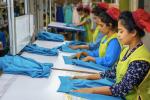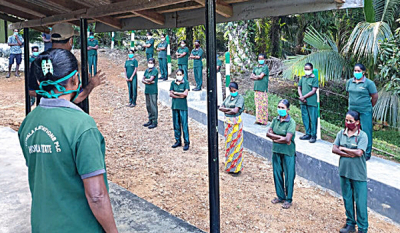In a statement, the Palm Oil Industry Association (POIA) which represents cultivators as well as refiners, processors, manufacturers, marketers and sellers of palm oil and other products of the oil palm, said the local industry could help mitigate the effects on multiple sectors, of the increase in the special commodity levy on imported palm oil.
Sri Lanka already has 9,000 hectares of oil palm, cultivated under highly-regulated conditions, to ensure the industry is environmentally non-invasive; and plantation companies have been mandated to increase the country’s total area under oil palm to 20,000 hectares under strictly-enforced guidelines, the Association pointed out.
However, the baseless vilification of the local palm oil industry by elements with vested interests had seriously delayed the government-approved expansion of cultivation, leading to the country producing just 23,000 tonnes of palm oil per annum and the import of a staggering 240,000 tonnes of crude palm oil into the country each year, the POIA said.
“Numerous sectors such as confectionery manufacturers have already expressed concern on the increase in their costs of production as a result of the imposition of the special commodity levy on imported palm oil,” POIA President Dr Rohan Fernando said.
“Confectionary manufacturers, for example, have said they would start making losses of Rs 100 million per month as a result of the higher cost of imported palm oil.”
“While we understand and appreciate the factors that have necessitated the imposition of the levy, we feel this is an opportune moment for the government to support the local palm oil industry, especially since it can contribute significantly to the government’s drive to promote domestic production and self-sufficiency as a long term goal.
Palm oil cultivation is already helping save valuable foreign exchange by reducing imports at a time the country is trying to conserve foreign currency, and has the potential to help Sri Lanka conserve even more foreign exchange in the years ahead.”
Dr Fernando conceded that the local palm oil industry would not be in a position to supply all of Sri Lanka’s palm oil requirements for several years, but emphasised that allowing the industry to proceed with investments in the pipeline would enable a foundation to be laid for substantial import substitution in the medium term.
The palm oil industry currently employs about 13,000 people in cultivation, refining and production.
The plantation companies had implemented all health and safety measures recommended for workers in oil palm plantations and ensured that the estates resumed work within days of the declaration of a country-wide curfew in March this year, conscious of the importance of keeping production going, Dr Fernando disclosed.
He added: “It is absurd that activists and lobbyists with vested interests who have been campaigning against oil palm on the basis of events that took place decades ago in some other parts of the world, ignore the fact that it has taken 50 years for Sri Lanka to cultivate 9,000 hectares of oil palm, and that even after oil palm cultivation ultimately reaches the government-mandated 20,000 hectares, the crop would account for only 2.5 per cent of the extent under tea, rubber and coconut.”
“They also ignore the fact that the government decision to encourage cultivation of oil palm is backed by comprehensive conditions and guidelines that ensure there will be no environmental degradation, no deforestation and no replacement of other viable crops,” Dr Fernando said.























